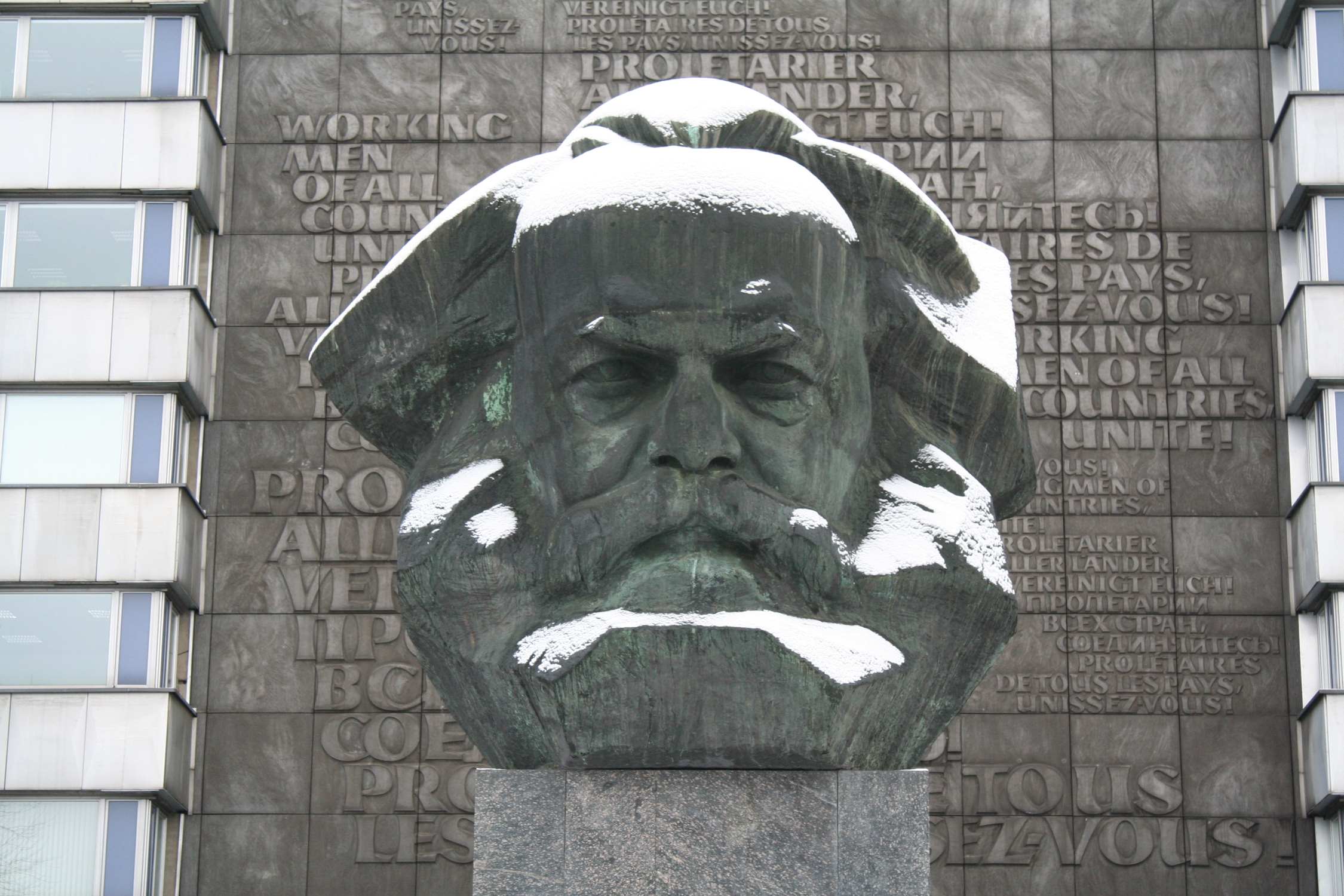
The Karl Marx Monument is an iconic landmark that stands as a symbol of political and intellectual change. Located in the city of Chemnitz, Germany, the monument pays homage to the famous philosopher and economist, Karl Marx. Erected in 1971, the statue has become a prominent tourist attraction, drawing visitors from around the world.
This monumental structure not only captures the essence of Marx’s ideologies but also reflects the historical significance of the city. With its towering height and grandeur, the Karl Marx Monument showcases the lasting impact of Marx’s ideas on society and serves as a reminder of the city’s rich cultural heritage.
In this article, we will delve into 13 astounding facts about the Karl Marx Monument, exploring its history, design, and the impact it has had on both locals and visitors. So, let’s embark on a journey to discover the intriguing features and fascinating stories behind this remarkable landmark.
Key Takeaways:
- The Karl Marx Monument in Trier, Germany, is a 5.5-meter bronze statue of Karl Marx, symbolizing his enduring influence on political thought and ideology. It’s a must-see for history enthusiasts and travelers.
- Surrounded by historical sites, the Karl Marx Monument stands as a constant tribute to the enduring legacy of Karl Marx, sparking intellectual discussions and debates. It’s a captivating symbol of his profound impact on shaping political and economic thought.
A Monument to Karl Marx
The Karl Marx Monument is a grand sculpture dedicated to the renowned philosopher, economist, and sociologist, Karl Marx. It stands as a symbol of his enduring influence on political thought and ideology.
The Monument’s Location
The Karl Marx Monument is located in Trier, Germany, Marx’s birthplace. It stands prominently in the city’s central square, known as the Karl-Marx-Platz, attracting visitors from all over the world.
An Impressive Statue
The monument itself is an impressive bronze statue of Karl Marx, standing at a height of 5.5 meters (18 feet). The statue portrays him with a resolute expression, holding a book and pen, symbolizing his intellectual contributions.
Unveiled in 1953
The Karl Marx Monument was unveiled on August 5, 1953, commemorating the 135th anniversary of Marx’s birth. It was a monumental event, attended by thousands of people who came to pay homage to the influential thinker.
Designed by Ludwig Engelhardt
The monument was designed by the renowned German sculptor, Ludwig Engelhardt. His design captures the essence of Marx’s philosophical ideas and the impact he had on shaping political ideologies.
A Symbol of Marxism
The Karl Marx Monument has become a powerful symbol of Marxism and serves as a meeting point for political gatherings and rallies, promoting discussions on social and economic equality.
Redesigned in 1976
In 1976, the monument underwent a redesign, further emphasizing Marx’s significance. It was transformed into a more prominent and dynamic structure, creating an even stronger visual impact.
Cultural Landmark
The Marx Monument has become not only a political symbol but also a cultural landmark. It has been featured in numerous artworks, photographs, and films, cementing its status as an iconic representation of Karl Marx.
A Place of Controversy
Despite the monument’s significance, it has also faced criticism and controversy over the years. Some view it as a relic of a failed political ideology, while others argue that it brings forth important discussions about society and equality.
Tourist Attraction
The Karl Marx Monument is a major tourist attraction in Trier. Visitors flock to the city to see this awe-inspiring sculpture, paying tribute to one of the most influential figures in modern history.
Surrounded by Historical Sites
The monument is surrounded by other historical sites, adding to its allure. Nearby landmarks include the birthplace of Karl Marx, the Karl Marx House Museum, and the Trier Cathedral, creating a rich historical and cultural experience for visitors.
Lighting Effects
During special occasions and events, the Karl Marx Monument is illuminated with mesmerizing lighting effects, enhancing its grandeur and inviting visitors to marvel at its beauty during the day and night.
A Continuous Tribute
The Karl Marx Monument stands as a constant tribute to the enduring legacy of Karl Marx. It serves as a reminder of his profound impact on shaping political and economic thought and continues to spark intellectual discussions and debates.
Discover the captivating Karl Marx Monument in Trier, Germany, and delve into the rich history and philosophy behind this awe-inspiring symbol. Explore the surrounding historical sites, immerse yourself in the cultural significance, and add this iconic landmark to your travel bucket list. The 13 Astounding Facts About The Karl Marx Monument showcase the enduring influence of one of the most influential thinkers in modern history.
So, what are you waiting for? Embark on this intellectual and cultural journey, where past meets present, and immerse yourself in the legacy left by Karl Marx.
Conclusion
In conclusion, the Karl Marx Monument stands as a symbol of political ideology and historical significance. With its towering presence and intricate design, it continues to attract visitors from all over the world. The monument showcases the enduring legacy of Karl Marx and the impact he had on economic and social theories. Whether you agree with his ideologies or not, there’s no denying the importance of the Karl Marx Monument as a historical landmark. So, if you ever find yourself near this impressive structure, take the time to appreciate its grandeur and reflect on its significance in shaping our history.
FAQs
Q: When was the Karl Marx Monument constructed?
A: The Karl Marx Monument was constructed in 1983.
Q: Where is the Karl Marx Monument located?
A: The Karl Marx Monument is located in Chemnitz, Germany.
Q: How tall is the Karl Marx Monument?
A: The Karl Marx Monument stands at a height of 13 meters.
Q: Who created the Karl Marx Monument?
A: The Karl Marx Monument was created by the sculptor Lev Kerbel.
Q: What is the significance of the Karl Marx Monument?
A: The Karl Marx Monument is a symbol of Karl Marx’s ideologies and serves as a reminder of his contributions to political and economic theories.
Q: Are there any other notable landmarks in Chemnitz?
A: Yes, Chemnitz is home to several notable landmarks, including the Red Tower, the Chemnitz Opera House, and the St. Peter’s Church.
Q: Can visitors access the Karl Marx Monument?
A: Yes, visitors can access the Karl Marx Monument and even go inside to see the exhibition dedicated to Karl Marx’s life and work.
Q: Are there any guided tours available for the Karl Marx Monument?
A: Yes, guided tours are available for visitors who want to learn more about the history and significance of the Karl Marx Monument.
The Karl Marx Monument stands as a testament to the enduring legacy of a revolutionary thinker, much like the historical landmarks in Binghamton, New York. Marx's ideas formed the foundation of socialism, a political and economic system that continues to shape our world today. To truly appreciate the significance of this monument, one must also understand the life and ideas of the man behind it, Karl Marx himself.
Was this page helpful?
Our commitment to delivering trustworthy and engaging content is at the heart of what we do. Each fact on our site is contributed by real users like you, bringing a wealth of diverse insights and information. To ensure the highest standards of accuracy and reliability, our dedicated editors meticulously review each submission. This process guarantees that the facts we share are not only fascinating but also credible. Trust in our commitment to quality and authenticity as you explore and learn with us.


